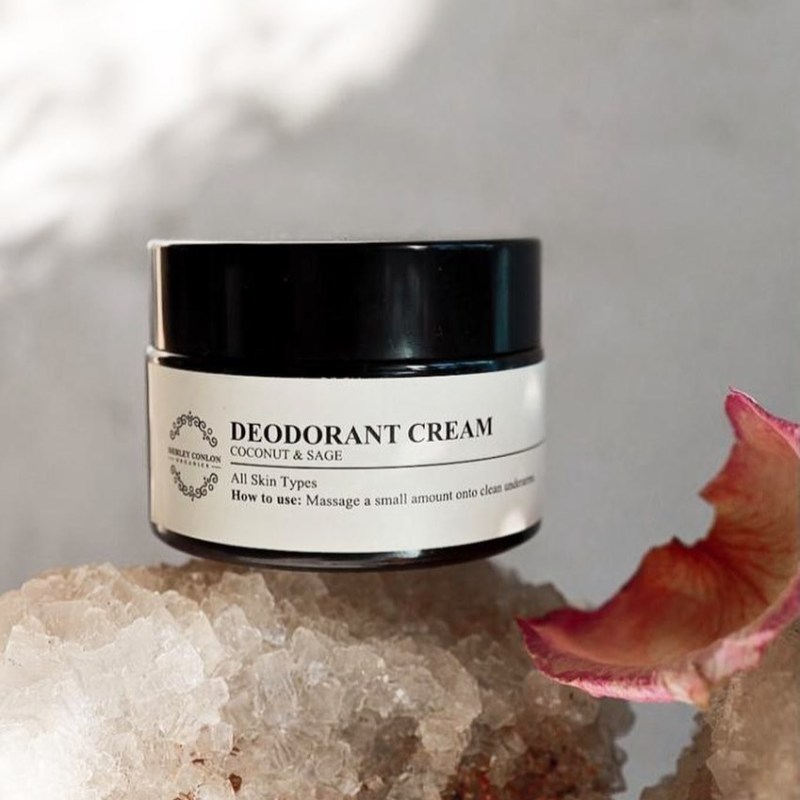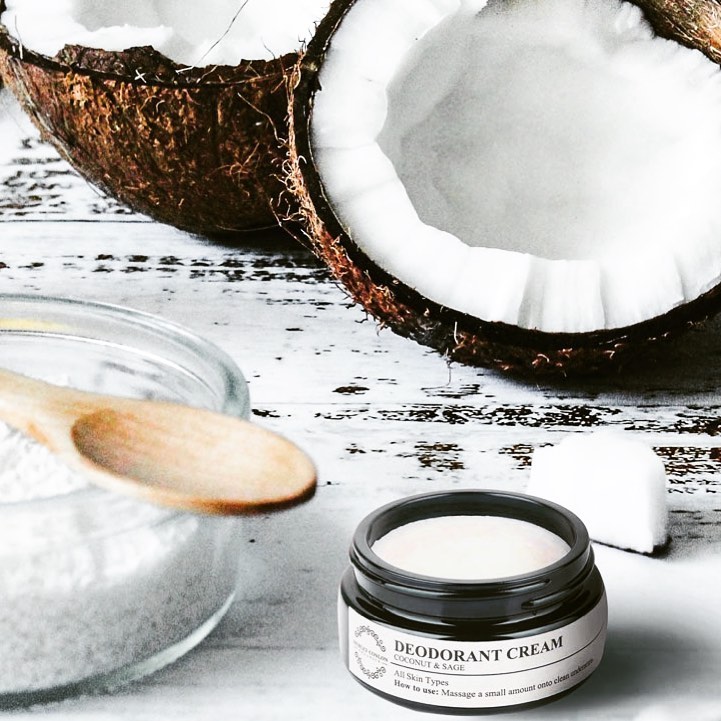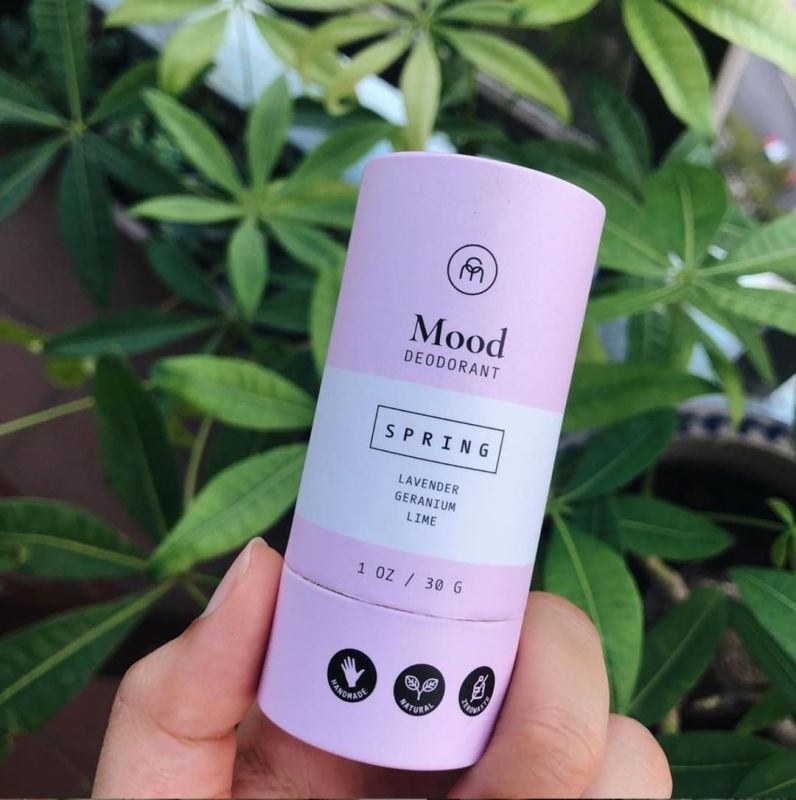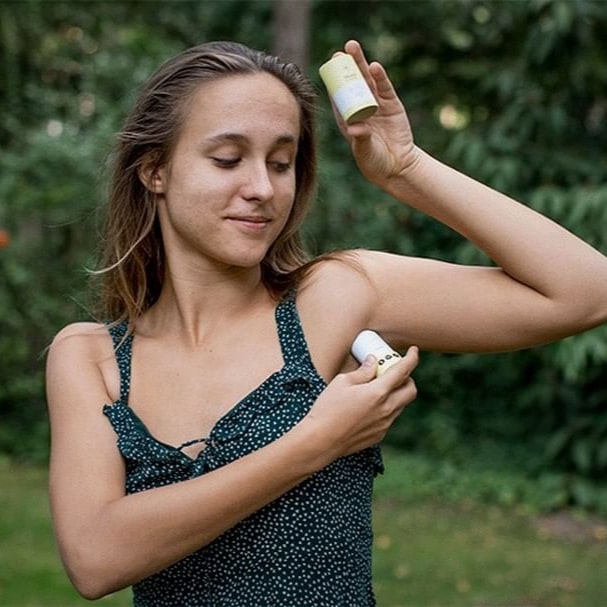Eco-friendly skincare is becoming popular, and boy, aren’t we glad! More people are becoming aware and conscious of their product choices that directly affects our health and the environment, and more companies are innovating with cleaner production ingredients, methodologies & packaging. Deodorants being one of them as it is an important everyday hygiene staple, together with toothpaste tabs, bath and menstrual products.
Smelling clean and fresh is one way to boost our self-confidence. But smelling clean doesn’t always equate to a clean deodorant or skin care products for you, or the planet. Let’s explore why eco-friendly deodorants deserve the attention.
Did you know that your deodorant could be a cause for the pollution crisis? That’s because some deodorants emit volatile organic compounds, otherwise known as VOC’s whose molecules are a major ingredient in the formation of urban smog, which is unhealthy for humans.

Globally, we get through 3bn aerosol deodorants a year. Although they no longer contain harmful chlorofluorocarbons (CFCs) that deplete the ozone layer, aerosol deodorants still contain gas propellants that contribute to air pollution and climate change.
And let’s not forget all that plastic waste!
Zero Waste deodorants
SHIFTING to natural deodorants targets one of the most problematic environmental issues today- Pollution & plastics! Let’s admit it, plastics in our skincare cupboards are so out of style. There are many zero-waste ways your deodorant may come from:
- Deodorant Creams: A soft balm, these often comes in a glass jars, which are reusable, refillable and can be repurposed for another use.


A natural, vegan deodorant cream with organic coconut oil, shea butter and arrowroot powder
- Compostable Packaging: For a more traditional feel of application, there are clean deodorants options that come in a plastic-free, compostable paper tube packaging. To apply, just expose the deodorant stick enough to glide it over to a clean underarm skin. You’ll be surprised that a small stick like this can last you up to 3 to 4 months – meaning that the packaging is being maximized unlike other deodorants where the actual product is so proportionately less given the size of the packaging. That’s zero-waste and best value for money – in one!
- Go package-free: That is right, zero packaging material. Alum, also called “deodorant rock” is a natural non-toxic crystal that can be bought as it is- a crystal or ‘rock’ without packaging. Do not confuse alum with the harmful aluminium that is found in many deodorants in the market. Alum works by tightening the pores of the skin to prevent too much sweating, although it is not to be considered as antiperspirant but more of a deodorizer as it kills odour-causing bacteria rather than preventing the skin to naturally perspire. Unlike aluminium deodorants it doesn’t block the skin from perspiring which is very important for the body to do in order to cool down and release toxins & salt from the body.
- Try DIY: You’d be surprised as to how easy it is to make your deodorants at home. There are multiple recipes freely available and easy to follow. You can even pick your favourite essential oils and tailor the fragrances as per your need. Make it in a larger batch, and this makes for such a wonderful gift too!
Clean ingredients
One more reason to love natural and eco-friendly deodorants is that it consists of clean, healthy ingredients.
- Aluminium and parabens are the top harmful ingredients that we need to look out for when buying a deodorant. As mentioned earlier, aluminium doesn’t really deodorize the skin from the sweat but rather blocks the skin from producing sweat. Aluminium and paraben-free deodorants use other natural, safe and biodegradable ingredients such as arrowroot powder, magnesium, minerals or baking soda, to fight off the odour, but not necessarily prevent the sweat.



Mood natural deodorants are made with up to 16 plant and mineral ingredients.
- Clean deodorants use essential oils to keep you smelling fresh rather than artificial fragrances that only come in very limited and almost the same scent choices.
- Another main ingredient for zero-waste deodorants are natural oils and butter like coconut oil and shea butter, that are sustainably sourced. This helps the product glide smoothly to the skin, leaving it moisturized throughout the day and provides extra odour protection even if you sweat.
- Natural ingredients in deodorants help in detoxifying the skin of the accumulated chemicals from regular use of traditional deodorants. So if you are seeing that the product doesn’t work with fighting off odour, just give it sometime to detoxify the skin or try applying a detox mask to the underarms to release the chemicals faster and aid in the effectiveness of natural deodorants.
Choose Cruelty Free
Other reasons why we love eco-friendly and clean deodorants:

We love our little furry friends the same way we love the environment and ourselves. When you switch to cruelty free skincare, you are most likely getting a cleaner formula free from potentially harmful chemicals such as parabens, sulfates, and synthetic dyes.
These toxic ingredients can be irritating to the skin and result in breakouts, allergic reactions, and inflammation which is probably what you are trying to address with your skincare products in the first place. So generally speaking, if you choose to save animals from a potentially harmful fate, you will do the same for your skin.
Animals used in experiments are not only confined to small cages and inhuman conditions but they are subjected to harmful tests that may cause blindness, maim and sometimes death.
Shop Local
Look out for a local brand that is making natural deodorants. Supporting small, local businesses not only reduces the carbon footprint but also helps in stimulating the local economy. And a lot of them are mindful of their ingredients and free of harmful chemicals that commercial brands may consist of.
It’s never a bad practice to look at the ingredient lists, do a little research and note the packaging. Let’s get rid of that BO and the BS!
You’re not alone. Share your experiences, tips, tricks; post your questions or even challenge what we’ve written! Let’s build an eco-conscious community together!
Happy SHIFTING!
